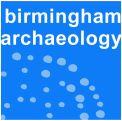Connecting Derby. A Programme of Archaeological Investigations
Birmingham Archaeology, 2017. https://doi.org/10.5284/1046274. How to cite using this DOI
Data copyright © University of Birmingham unless otherwise stated
This work is licensed under the ADS Terms of Use and Access.
Primary contact
Historic England
1 Waterhouse Square
138-142 Holborn
London
EC1N 2ST
UK
Tel: 01793 414700
Fax: 01793 414707
Resource identifiers
- ADS Collection: 2859
- DOI:https://doi.org/10.5284/1046274
- How to cite using this DOI
Introduction

Birmingham Archaeology was commissioned by Derby City Council Regeneration and Community Department to undertake archaeological fieldwork ahead of the redevelopment of Derby Inner Ring Road. The sites which required detailed archaeological mitigation included; land behind the Seven Stars Public House, 85-89 King Street, the corner of King Street and St Helen’s Street, Ford Street/ Friar gate car park, land at the corner of Agard Street, Stafford Street and Green Lane/ Babbington Road Junction.
Stratified archaeological deposits spanned a period from the 11th to 20th centuries. Residual evidence of prehistoric and Roman occupation was also recovered. Evidence relating to the medieval development of Derby City centre was primarily preserved on the Ford Street/ Friar Gate site, where extensive pitting, levelling and structural features were identified. Evidence of medieval field and burgage boundaries were discovered during watching briefs in the Ford Street Car Park and in Stafford Street. Further evidence of the medieval town, in the form of two severely truncated burials was noted at the corner of King Street and St Helen’s Street.
Evidence of 18th-century domestic buildings was identified beneath the Ford Street/Friar Gate car park. These structures are known through the surviving historical records to form part of ‘Chesshyre’s House’ constructed in c 1708. The 19th-century industrial heritage of Derby was represented by the bottle and muffle kiln bases and workshop buildings of the Old Crown Derby China Works and the Spar and Marble manufactory works boiler house, steam engine base, swimming pool and workshop buildings, identified on King Street. Evidence of burial practices of the 19th century, were preserved at the corner of Agard Street, where an intact, upstanding burial vault was exposed. This probably represented the surviving remains of the burial ground of the Calvanist (Particular) Baptist Chapel, known to have been located on this site.







